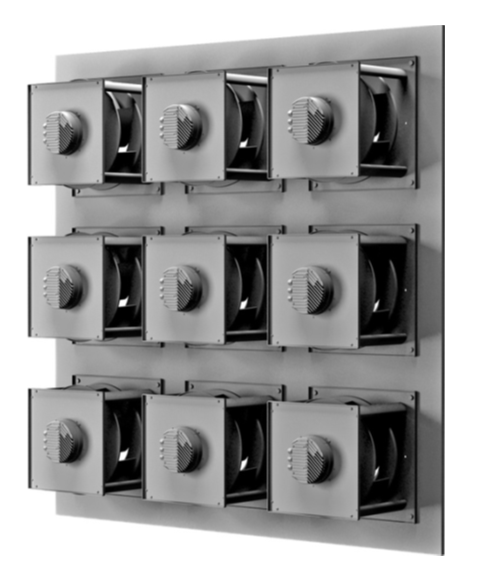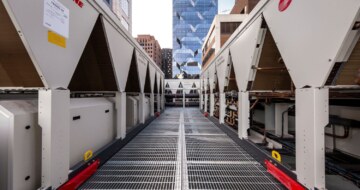
November 10, 2025 in Advisory Notes
Mandatory Climate Reporting and the Role of Buildings
Mandatory climate-related risk and opportunity reporting is a new Australian regulatory requirement for large companies to disclose how climate change...
November 29, 2017
EC fans are a hot topic in energy efficient air movement technology, with options available for almost every application in a HVAC system. These ‘new technology’ fans use significantly less energy compared to conventional fan designs and in existing commercial buildings their retrofitting could result in reductions of up to 10% in overall building energy consumption. As with all promising new technologies there are a range of factors that should be considered to help ensure that the potential benefits are achieved.

In simple terms Electronically Commutated (EC) fans consist of a brushless DC motor with on-board electronics used to drive and control a fan rotor; compared to traditional AC induction motor technology. EC fans are powered by 240 or 415 Volt AC electricity supply, which is converted to DC power by the motor’s electronics. EC motors can be up to 30% more efficient than Induction motors, largely because the secondary magnetic field comes from permanent magnets rather than copper windings. The external-rotor arrangement for these motors also makes for a very compact fan design, and the use of electronics to convert and control the power supply offers up other power saving opportunities.
EC fans are now used extensively in various applications, both for newly manufactured equipment and for retrofit into existing plant such as computer room AC units, refrigeration condensers and general HVAC systems. An increasingly common application is their use as replacement ‘plug fans’ as a significantly more efficient Air Handler Unit (AHU) retrofit option over traditional scroll fans.
In commercial buildings AHU fans can be responsible for up to 30% of the total building energy consumption. An EC plug fan retrofit has the potential to reduce AHU fan energy in the order of 10-30%, resulting in potential reductions of up to 10% in a building’s overall energy consumption. Energy savings of this scale will contribute to a marked improvement in a building’s NABERS energy rating.
EC plug fan retrofit option should be considered for end-of-life AHU fan replacement, or as part of a broader building systems energy reduction initiative. Innovative modular design options for these fans may also offer other advantages along with energy cost savings. Replacement of large traditional centrifugal fans in AHU’s is often logistically challenging because of access and space constraints leading to additional installation costs and inconvenience. The ability to replace with number of smaller compact plug fans may favourably address these issues.
Simple payback of the new plant through energy cost savings and simpler logistics can be in the order of 3 – 5 years, with additional on-going benefits including; reduced maintenance requirements, lower fan noise and improved plant redundancy with multiple fans operating.
EC fans are a viable and attractive solution for many HVAC applications, offering a number of advantages over traditional AC motors, particularly for AHU fan upgrades.
download pdf
November 10, 2025 in Advisory Notes
Mandatory climate-related risk and opportunity reporting is a new Australian regulatory requirement for large companies to disclose how climate change...

October 8, 2025 in Advisory Notes
Electrification projects can be complex undertakings bringing together a range of technical elements along with planning, coordination and logistics c...

September 1, 2025 in Advisory Notes
Cyber security incidents reported against both government and private organisations continue to increase in both frequency and severity.

July 15, 2025 in Advisory Notes
During COVID-19 many buildings experienced a significant reduction in the number of occupants. With the move to remote working, the reliance on tenant...